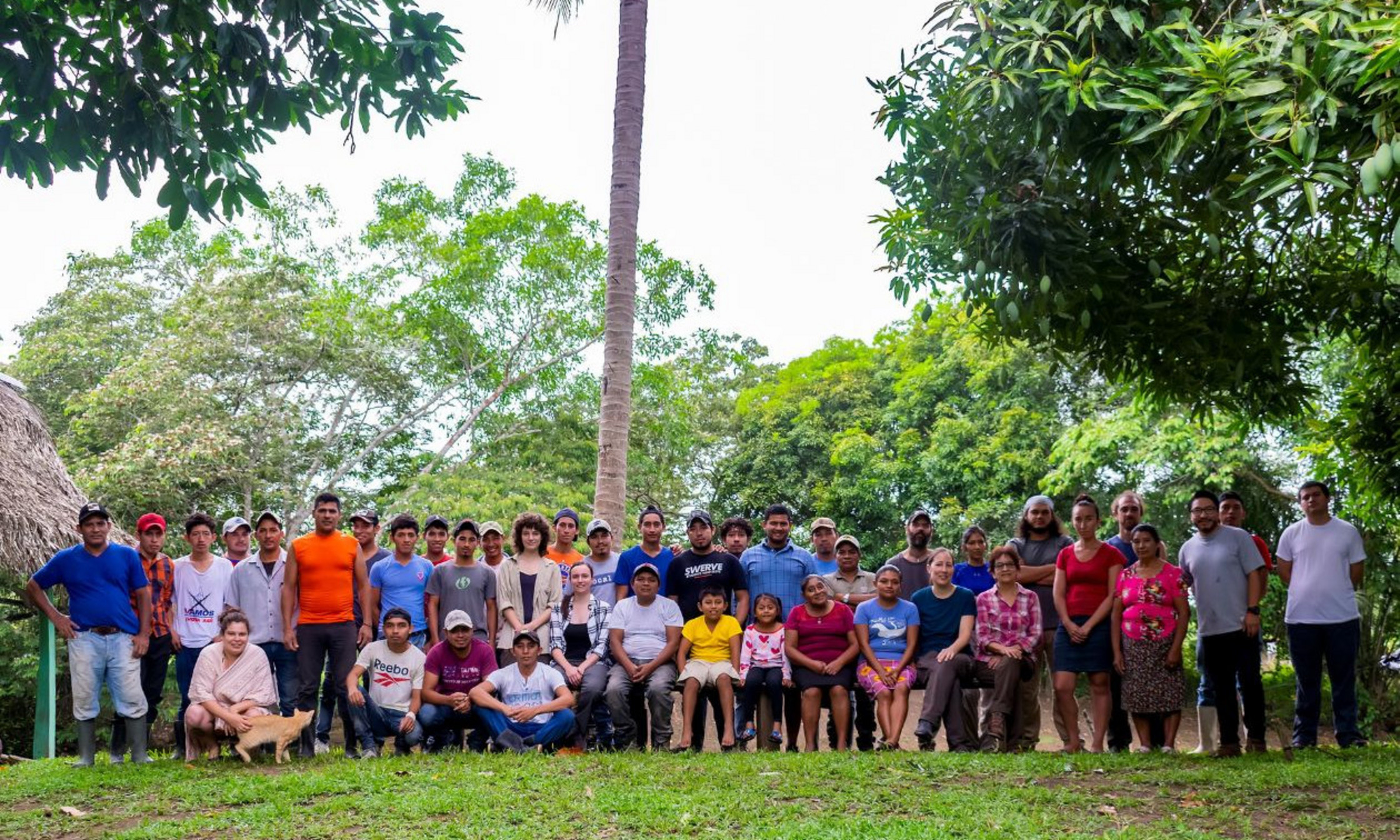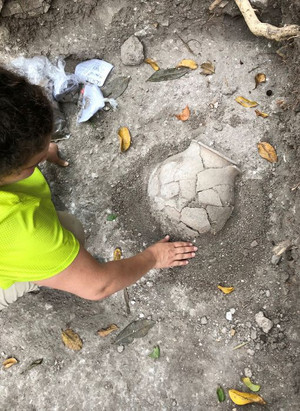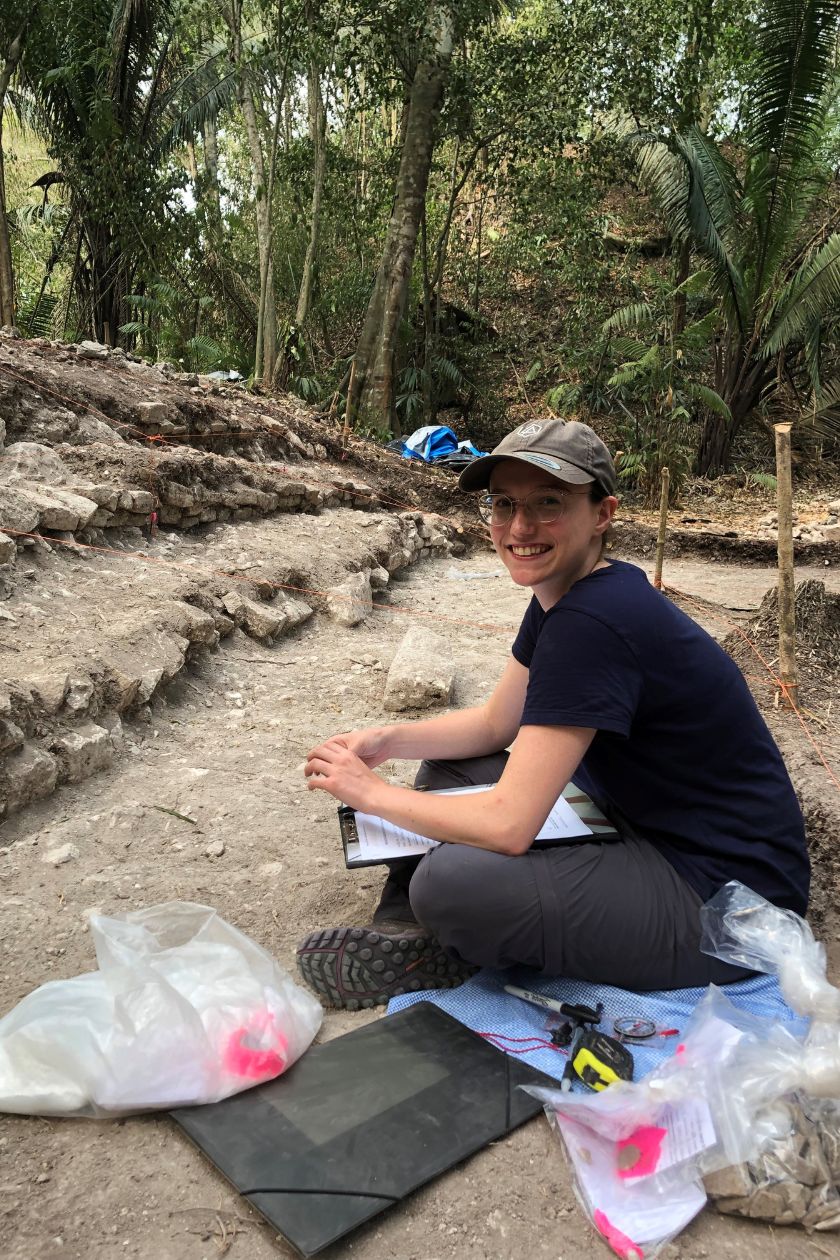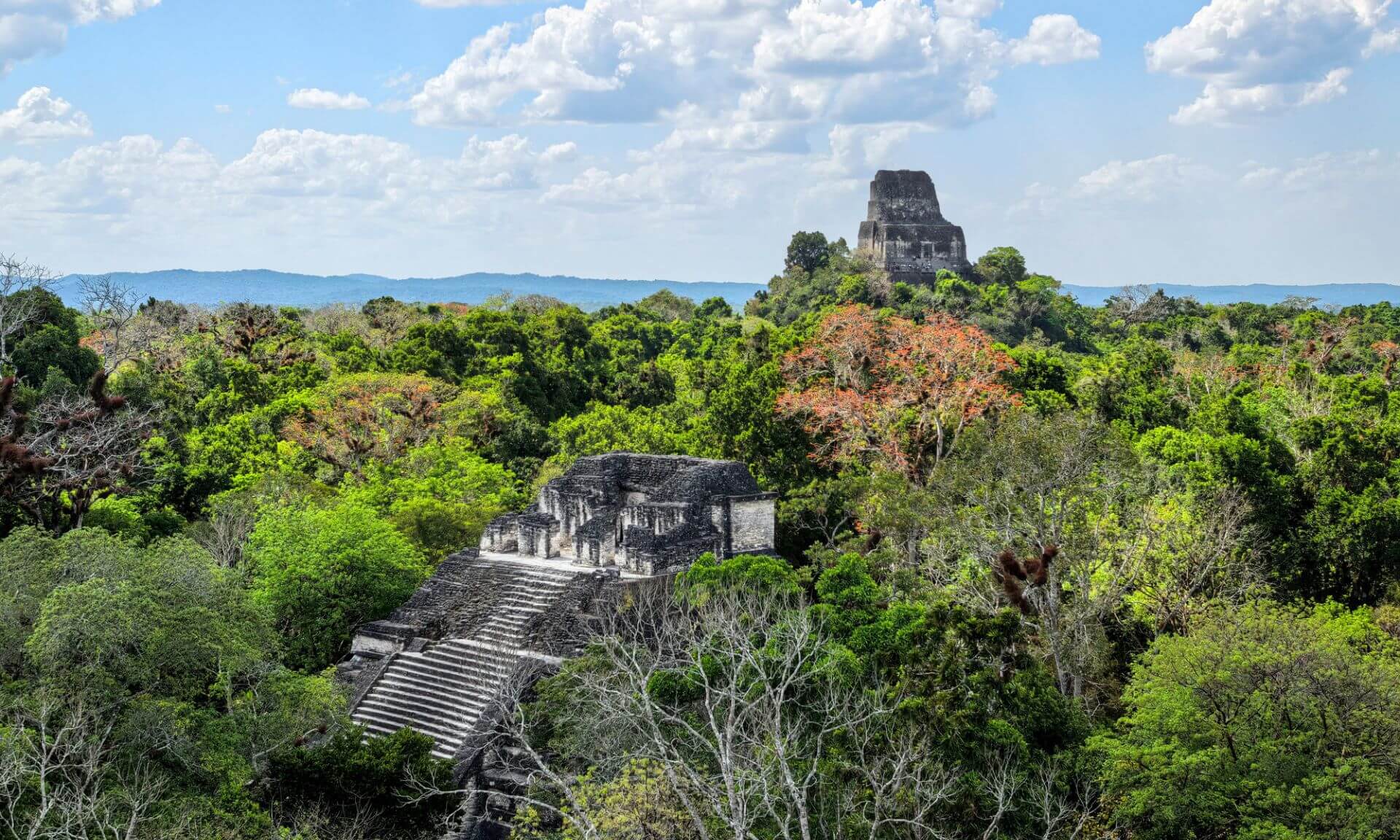UdeM students search for traces of the Mayan past in Guatemala

In a remote region of northern Guatemala near the border with Belize, a multidisciplinary international team of archaeologists and students led by Professor Christina Halperin of Université de Montréal is busy unravelling the mysteries of the ancient Mayan city of Ucanal. The name means “place of the yellow mountain.”
The Proyecto Arqueológico Ucanal (PAU), launched in 2014, involves researchers and students from a number of institutions, including UdeM, Universidad de San Carlos de Guatemala, and several American universities.
This year’s 45-person team includes six UdeM students: two undergraduates, two master’s students, one Ph.D. student, and a postdoctoral researcher. They are working with Guatemalan students and American experts.
Inhabited for over 3,000 years

The Ucanal site has been inhabited for more than 3,000 years and is still occupied today. Between 600 and 1000 CE, it experienced rapid growth. Recent research has found that it was more than a monumental centre. “We have mapped a large, dense city, with a central area of around 7.5 km² and a periphery covering at least 26 km²,” said Halperin.
The aim of the project is to learn more about the lives of Ucanal’s inhabitants during the Terminal Classic period (830-1000 CE), when many Mayan dynasties collapsed. “Contrary to our initial expectations, we found an increase in the population and a degree of prosperity, despite political instability,” said Halperin.
Two months in the field

The students are actively involved in all phases of the research. During the first month, they concentrated on the dig. In the second, they analyzed their finds in a laboratory on the island of Flores, site of the last Mayan stronghold, which remained unconquered until 1697.
“This summer, the team is focusing on ceremonial and administrative structures,” Halperin said. “We’re exploring a long building we think was a council house, where village chiefs would meet, and we hope it will tell us more about political organization during this turbulent period.”
Working conditions are far from ideal: the team lives in a camp in the middle of a national park, without electricity or a reliable Internet connection. To get a signal, they have to climb to the top of the tallest pyramid on the site, “and even there, the connection is spotty,” Halperin said with a laugh.
In addition to supervising the dig, she taught an intensive eight-day course for 12 students covering topics such as natural park management, the connection between cultural heritage and the environment, and the importance of traditional practices such as weaving.
“We’re not just studying the past, we’re looking at how this knowledge applies to the present, how it can inform our understanding of current Indigenous issues,” Halperin explained.
“The Maya didn’t disappear”

Halperin believes the discoveries made at Ucanal challenge certain preconceived notions about Mayan history. While it was thought that the population declined drastically after the Classic period, the excavations show that the site was still being used for ceremonies 500 years later, around 1500.
“The Maya didn’t disappear,” said Halperin. “They continued to inhabit the region and practice their traditions, and their culture survived despite the upheavals.”
The project offers students a unique perspective on the Maya’s long history of resistance and adaptation. Located far from colonial centres, the Ucanal region remained under Mayan control long after the conquest. Spanish influence didn’t really take hold until about 200 years ago.
The students are learning much more than academics. They work closely with local communities, participating in digs and project logistics.
“It’s an extraordinary learning opportunity for them,” Halperin said. “They are immersed in intensive research, working alongside international experts and the local community. It goes far beyond what can be taught in the classroom.”







